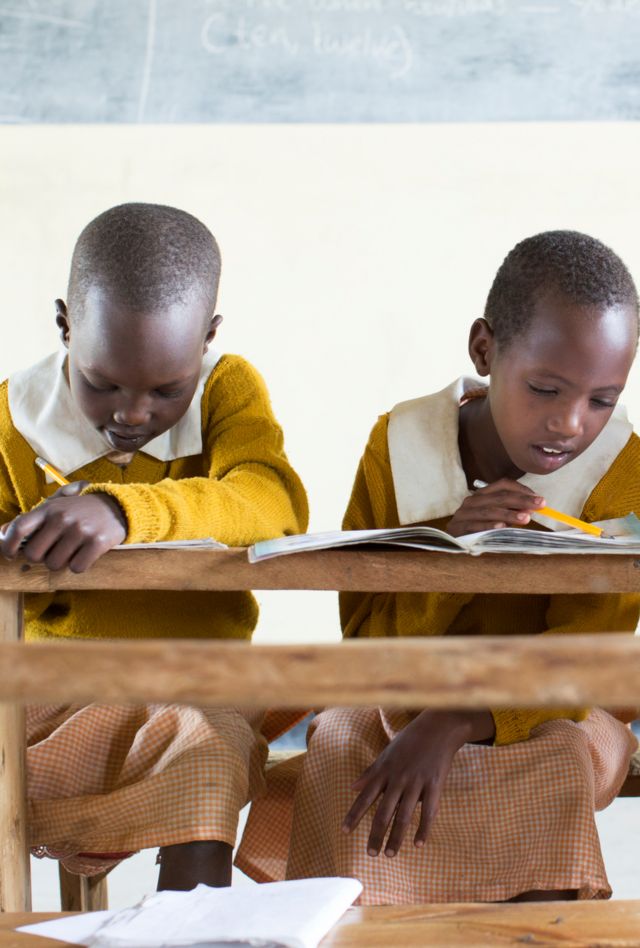Tusome Early-Grade Reading Evaluation

In 2014, the U.S. Agency for International Development (USAID) provided $88.8 million in funding to launch an education initiative to improve the reading skills of nearly 8 million Kenyan children. The program is called Tusome, which in Kiswahili means “Let’s read.” It was modeled after the successful Primary Mathematics and Reading (PRIMR) initiative that was also led by the Kenyan Ministry of Education.
In 2019, NORC at the University of Chicago conducted an independent endline evaluation of Tusome. The evaluation was intended to inform USAID and Kenyan government efforts to design and implement sustainable education programming to support the nation’s Journey to Self-Reliance. Our research employed several tools, including interviews with head teachers, curriculum support officers, teachers, and pupils at a nationally representative sample of 204 randomly selected schools. Within each school, 24 pupils in grades 1 and 2 were randomly selected to complete an Early Grade Reading Assessment (EGRA) that measured their phonological awareness, understanding and application of the alphabetic principle, and reading fluency and comprehension. In addition, we conducted interviews and focus groups with approximately 40 stakeholders, including representatives from USAID and the Kenyan Ministry of Education.
Our findings provided strong evidence for the efficacy of the Tusome model of instruction. From baseline to endline, pupils showed statistically significant improvements on all EGRA subtasks in both English and Kiswahili. Of particular note, gains in second-grade English reading observed from baseline to endline were roughly equal to gains from an additional full year of schooling.
Statistical models at the endline also showed that better implementation of Tusome in the classroom positively correlates with reading fluency. For instance, each 10-lesson advance in the Tusome teacher’s guidebook was associated with an increase of one correct word per minute in English reading fluency. And while teachers were broadly supportive of Tusome, at the time many struggled to keep up with the program’s pace: 39 percent of teachers who faced challenges said they didn’t have enough time to cover the content and 23 percent said the Tusome lesson pacing was too fast, likely owing to the reduction in instructional time from five periods to three periods per week for English and Kiswahili under the 2019 school timetable.
Finally, we found that Tusome was largely successful in securing buy-in from the government at different levels and different points in the implementation process, but more work was needed to ensure long-term sustainability. Of particular importance was the need to uphold the centralized book-procurement procedure, which facilitated a 1:1 textbook-to-student ratio.
Tusome ranks among USAID’s first experiences partnering with a government to take a piloted literacy program to national scale. As such, this evaluation offers an important and timely case study for translating USAID-funded pilot programs into large-scale national educational reforms. More broadly, results of this evaluation can inform strategies for transitioning donor-supported educational activities to partner governments, with the goal of ensuring program sustainability and reducing dependence on foreign assistance.
Related Tags
Project Leads
-
Varuni Dayaratna
Senior Vice PresidentProject Director -
Alicia Menendez
Senior FellowSenior Staff








